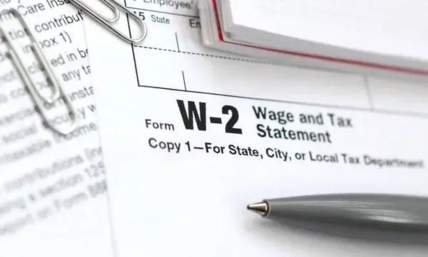What Is Retro Pay? An Adjustment Guide
Retroactive pay or retro pay is defined as compensation that is added on to your paycheck in order to compensate any previous payments that have fallen under. Retro pay differs from other forms of payment like back pay, as this refers to any payment that compensates a period of time when an employee has received no payment at all.
Retro pay should be calculated quickly in order to ensure that employees are able to pay their bills and remain satisfied whilst working for the company. You also need to ensure that you are abiding by labor laws as a company owner.
Also read: Can I Pay Off My Mortgage Early?

What Are Some Of The Key Payroll Issues That Require Retro Pay?
The vast majority of the time, payment shortfalls occur whenever any compensation changes have not been reflected within the payroll run. For instance, when working overtime, some companies may forget to multiply the hourly pay by 1.5. There are also shift differentiations that need accounting for if you have worked outside of your scheduled shift pattern.
Commissions should also be accounted for using retro pay as late-paying clients can often delay funds which impacts commission payments. Retro pay can also be used when an employee’s wage rise has not been accounted for.
Also read: What is a Bridge Loan?
Can Court Rulings Be Used For Retro Pay?
There are some instances where an employee may wish to sue their employer to access retro pay. These instances include the following:
-
Discrimination: An employee may received compensation in the form of retro pay if they believe that they have been discriminated against on the basis of their sexual preference, gender, race or age.
-
Retaliation: If an employer has fired their employee due to being a victim of any form of harassment.
-
Breaching Contracts: If an employer fails to pay their employee their negotiated, contracted rate of payment.
-
Violations of Overtime: If an employer fails to pay an employee correctly for any overtime that they have worked.
-
Violations of Minimum Wage: If you an employer has paid its employees below minimum wage as established in the Fair Labor Standards Act.
Also read: Checklist For Moving Into Your New House

How Can Retro Pay Be Calculated And Distributed?
Whenever you are working out how to use retro pay as an employer, you need to consider the type of compensation that you are paying (whether it is salaried or hourly).
You will also need to consider whether the employee should be paid for overtime or whether they are exempt along with the duration of time that they were underpaid for. In order to establish a gross figure for retroactive payments, then you need to calculate the difference between the pay that the employee received and what they should have received, including any overtime and differentials that they have worked outside of their usual shift patterns.
More often than not, retro pay is calculated using a manual method and added to the next payment for the employee. This is done by paying it as miscellaneous income as opposed to adding on additional hours or adjusting an employee's pay rate. Further factors that apply to retro pay are withholding choices or payroll taxes and thus, the employer will need to make sure that these are accurately reflected in the accounting period for the payroll.
Also read: How to Apply For a FHA Loan?
Frequently Asked Questions
How Do I Calculate And Distribute Retro Pay?
In order to calculate retro pay, you will need to ascertain the difference between what an employee has been paid in a specific period of time and what they were owed during that specific period of time. You will also need to consider whether they are paid hourly or on a salary.
You should also take into consideration the number of payroll periods where this has been the case as this will influence the amount that is owed to the employee. All of the periods of time that they have been underpaid will need to be accounted for using retro pay.
What Is The Key Difference Between Retroactive Pay & Back Pay?
The main difference between retroactive pay and back pay is that retroactive pay is classified as a rare pay adjustment that is used whenever an employee has received the wrong wages within a specified pay period. Whereas, back pay will occur whenever an employee has received no wage at all.
How To Pay An Employee Retroactively
You can use two specific methods in order to pay an employee using retro pay. These include adding retro payments to the employee’s regular wages for the next month or making a one-off payment to the employee.
It is important to understand the reason why these retroactive payments are being paid and thus, you should always clarify any confusion prior to making any retroactive payments. This is because retro pay is not classified as extra wages, but pay that has been earned previously.
It is also important that you include retro pay on any pay stubs so that you can evidence this as a company within any employee records in the eventuality that you are sued by an employee. You should also be aware that retro pay will influence tax and take this into account prior to making retroactive payments.
Also read: Pay Rent With a Credit Card

Conclusion
To conclude, retro pay is the name given to retroactive payments that are issued when an employee has not been paid their correct wage. They are usually added on to the employee's paycheck for the next month. However, they can be issued as standalone payments. This prevents the employer from having to adjust the employees wage, which they may forget to readjust at a later date.
You can also take a company to court for retroactive payments and this method can be used when you believe that you have been discriminated against on the basis of your gender, race, or sexual orientation. You can also take your employer to court for retroactive payments when you feel that you have been unfairly dismissed or not paid appropriately for any hours of overtime or differentials that you have worked.















